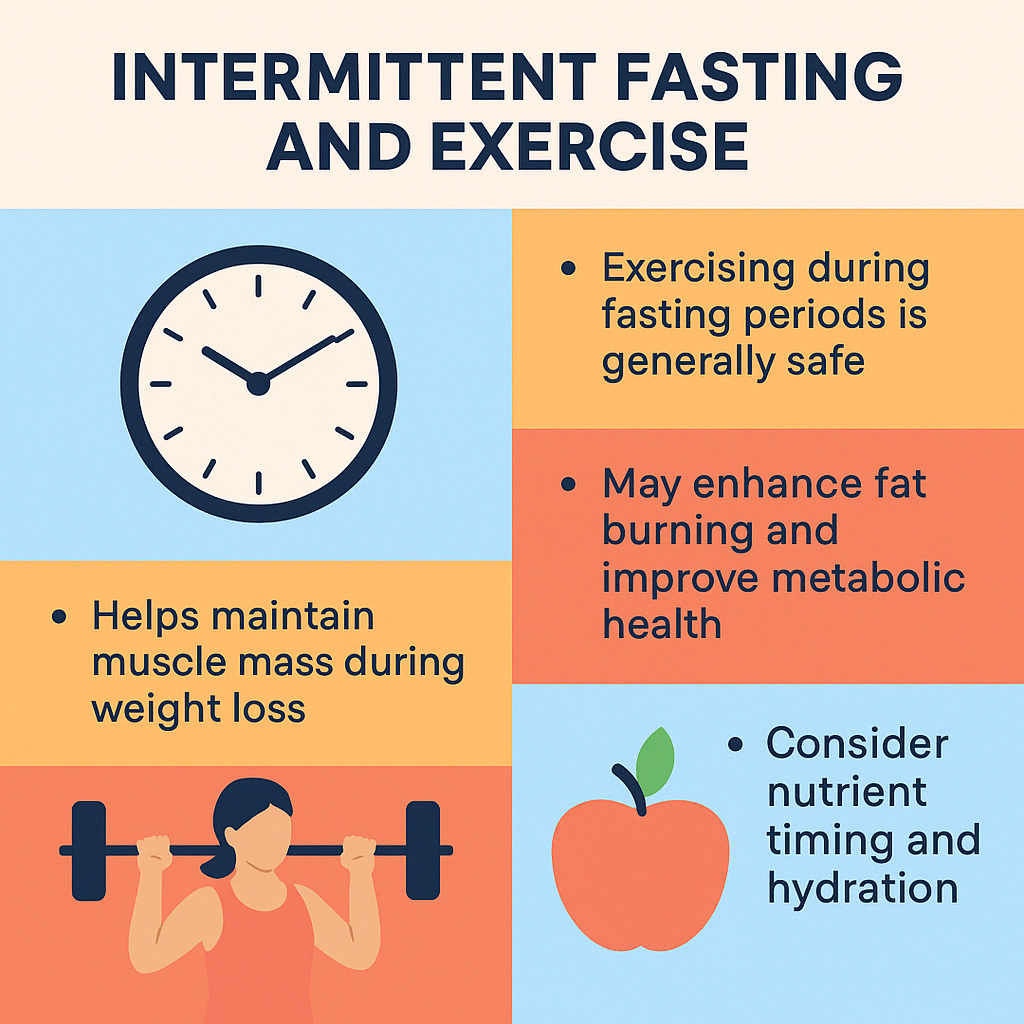Busting Myths: Unravelling the Threads of Intermitting Fasting and Exercise
Intermittent fasting has emerged as a popular lifestyle method to lose weight, increase energy levels, enhance mental clarity, ease digestive problems, and overall improve an individual's wellbeing.
Practising intermittent fasting along with exercise has surfaced as a cornerstone query in recent times.
This article aims to shed light on this topic using the latest research to help individuals decide if combining fasting and workout is beneficial for them.
An overview of intermittent fasting – its concept, different variations and its impact on the body's functioning, is addressed.
The correlation between exercising during fasting and its effect on weight loss, muscle gain, hormone levels, and overall health is analysed.
Concerns about the potential downsides of mixing fasting and exercise, including the possibility of over exertion, exhaustion, muscle loss or metabolic damage are addressed.
What Is Intermittent Fasting and Why Pair It with Exercise?
Our curiosity about health, nutrition, and fitness has led to the emergence of new concepts and methods to kick health-related goals, with 'Intermittent Fasting' firmly holding its ground in the limelight. This technique dictates periods of eating and fasting to regulate calorie intake, aiming to benefit the body physically and mentally. Different styles, such as the 16/8 method, 5:2 method, and eat-stop-eat, allow flexibility in incorporating this method into different lifestyles.
As innumerable health enthusiasts bring together exercise regimes with their new-found fasting schedules hoping to accelerate the benefits, it's essential to peel back the layers and understand the relationship between intermittent fasting and exercise.
Fasted Workouts: How Exercise During Fasting Impacts Fat and Muscle
Researchers have noted that exercising while fasting can contribute positively to weight loss by enabling the body to use fat stores for energy instead of readily available glucose. In addition, because fewer insulin spikes happen during fasting, the body may also respond better to muscle growth stimulus, enabling an individual to maintain or even gain muscle mass during fasting.
Moreover, by aligning your workout times with your fasting schedule, you can tap into hormonal benefits. During fasting, levels of growth hormones can increase, helping the body produce new protein for muscles. Simultaneously, levels of insulin drop, promoting fat burning efficiency. Therefore, theoretically, working out in a fasted state could be beneficial for muscle health and fat loss.

Understanding the Risks of Exercising While Fasting
Nevertheless, it's worth noting that results can differ greatly between individuals, depending on factors such as their age, gender, current health status, and fitness levels. Furthermore, it's essential to be acutely aware of any possible downsides to this approach.
One potential concern with exercising while fasting is the risk of overexertion and exhaustion. Since your body doesn’t have its usual source of immediate energy, pushing too hard during a workout could lead to feelings of lightheadedness or fatigue. In extreme cases, there is a risk of muscle loss if the body isn’t getting enough nutrients during the fasting windows. This could potentially slow down the metabolism and make weight loss more difficult long-term.
A Personal Trainer’s View: Balancing Nutrition, Training and Recovery
From the perspective of a personal trainer, balance is the key. If you're keen to explore intermittent fasting incorporated with regular exercise, it's recommended to gradually ebb into the process. It's essential to listen to your body at all times during workouts or in fasting windows. Ensure you're consuming nutrient-rich foods during your eating windows and staying well hydrated to fuel your workouts and recovery.
Creating a Sustainable Fasting and Fitness Routine
It's all about figuring out what works best for your body. There's no one-size-fits-all approach here. The aim is to make lifestyle changes that are positive, sustainable, and contributing to your overall wellbeing—both mentally and physically. So, don't be too hard on yourself – a healthy lifestyle is a marathon, not a sprint. And remember, it's always wise to consult with a medical or health professional before embarking on a new fitness or dietary approach.
Does Intermittent Fasting Affect Exercise Performance?
A common question for newcomers is whether intermittent fasting negatively impacts physical performance. While there may be an adjustment period, studies suggest that most people adapt well after a few weeks. Endurance workouts may benefit from fasted states, while strength training can be maintained with proper post-workout nutrition during the eating window. It's all about timing and smart fueling.
Best Time to Exercise While Intermittent Fasting
For optimal results, timing your workouts within or close to your eating window is ideal. A popular strategy is to train at the end of your fast and break it with a post-workout meal, giving your body both the anabolic response it needs and replenishing nutrients. This approach maximizes fat burning while supporting muscle recovery and energy levels.
What to Eat After a Fasted Workout
Post-fasted workouts require nutrient-dense meals to support muscle repair and glycogen replenishment. Focus on lean protein, complex carbohydrates, and healthy fats. Examples include grilled chicken with quinoa and vegetables, a protein smoothie with oats and berries, or eggs with avocado and whole grain toast. Don’t forget to rehydrate—especially if you’ve exercised in a fasted state.
